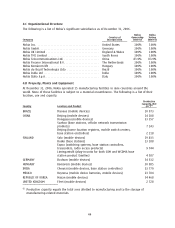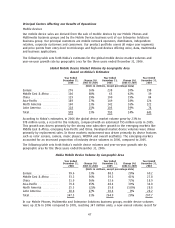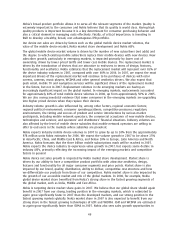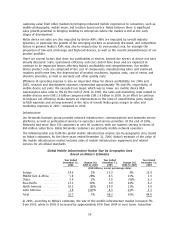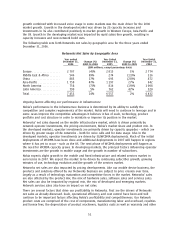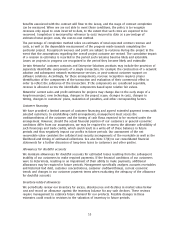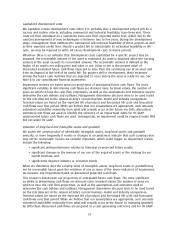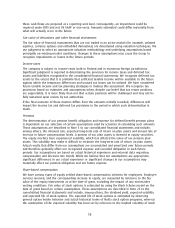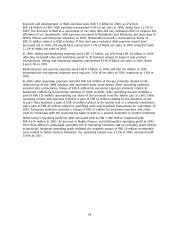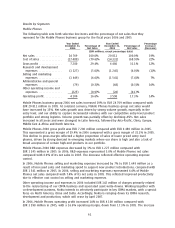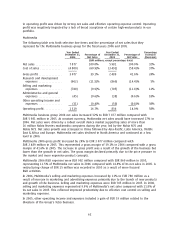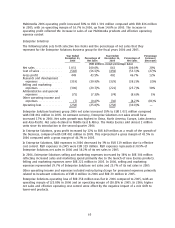Nokia 2006 Annual Report Download - page 55
Download and view the complete annual report
Please find page 55 of the 2006 Nokia annual report below. You can navigate through the pages in the report by either clicking on the pages listed below, or by using the keyword search tool below to find specific information within the annual report.Accounting developments
The International Accounting Standards Board, or IASB, has and will continue to critically examine
current International Financial Reporting Standards, or IFRS, with a view toward increasing
international harmonization of accounting rules. This process of amendment and convergence of
worldwide accounting rules continued in 2006 resulting in amendments to the existing rules
effective from January 1, 2007 and additional amendments effective the following year. These are
discussed in more detail under ‘‘New IFRS standards and revised IAS standards’’ in Note 1 to our
consolidated financial statements included in Item 18 of this annual report on Form 20F. There were
no material IFRS accounting developments adopted in 2006.
Critical Accounting Policies
Our accounting policies affecting our financial condition and results of operations are more fully
described in Note 1 to our consolidated financial statements included in Item 18 of this annual
report on Form 20F. Certain of Nokia’s accounting policies require the application of judgment by
management in selecting appropriate assumptions for calculating financial estimates, which
inherently contain some degree of uncertainty. Management bases its estimates on historical
experience and various other assumptions that are believed to be reasonable under the
circumstances, the results of which form the basis for making judgments about the reported carrying
values of assets and liabilities and the reported amounts of revenues and expenses that may not be
readily apparent from other sources. Actual results may differ from these estimates under different
assumptions or conditions.
Nokia believes the following are the critical accounting policies and related judgments and estimates
used in the preparation of its consolidated financial statements. We have discussed the application
of these critical accounting estimates with our Board of Directors and Audit Committee.
Revenue recognition
Revenue from the majority of the Group is recognized when persuasive evidence of an arrangement
exists, delivery has occurred, the fee is fixed or determinable, collectibility is probable and the
significant risks and rewards of ownership have transferred to the buyer. The remainder of revenue
is recorded under the percentage of completion method.
Mobile Phones, Multimedia and certain Enterprise Solutions and Networks revenue is generally
recognized when persuasive evidence of an arrangement exists, delivery has occurred, the fee is
fixed or determinable, collectibility is probable and significant risks and rewards of ownership have
transferred to the buyer. This requires us to assess at the point of delivery whether these criteria
have been met. When management determines that such criteria have been met, revenue is
recognized. Nokia records estimated reductions to revenue for special pricing agreements, price
protection and other volume based discounts at the time of sale, mainly in the mobile device
business. Sales adjustments for volume based discount programs are estimated based largely on
historical activity under similar programs. Price protection adjustments are based on estimates of
future price reductions and certain agreed customer inventories at the date of the price adjustment.
An immaterial part of the revenue from products sold through distribution channels is recognized
when the reseller or distributor sells the product to the enduser. Service revenue is generally
recognized on a straight line basis over the specified period unless there is evidence that some other
method better represents the stage of completion. Except for separately licensed software solutions
and certain Networks’ equipment, the company generally considers the software content of its
products or services to be incidental to the products or services as a whole.
Networks revenue and cost of sales from contracts involving solutions achieved through modification
of complex telecommunications equipment is recognized on the percentage of completion basis
when the outcome of the contract can be estimated reliably. This occurs when total contract revenue
and the cost to complete the contract can be estimated reliably, it is probable that economic
54


